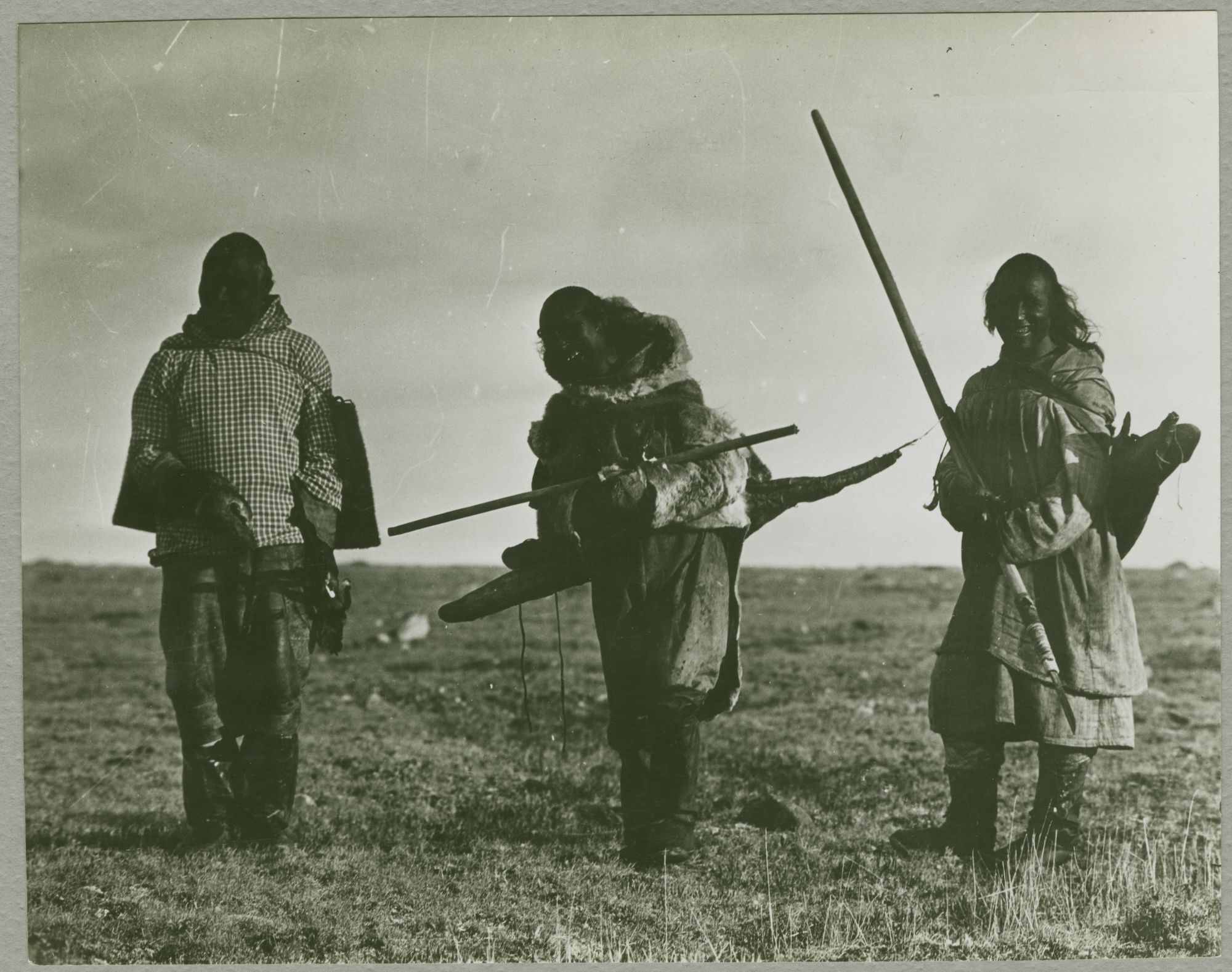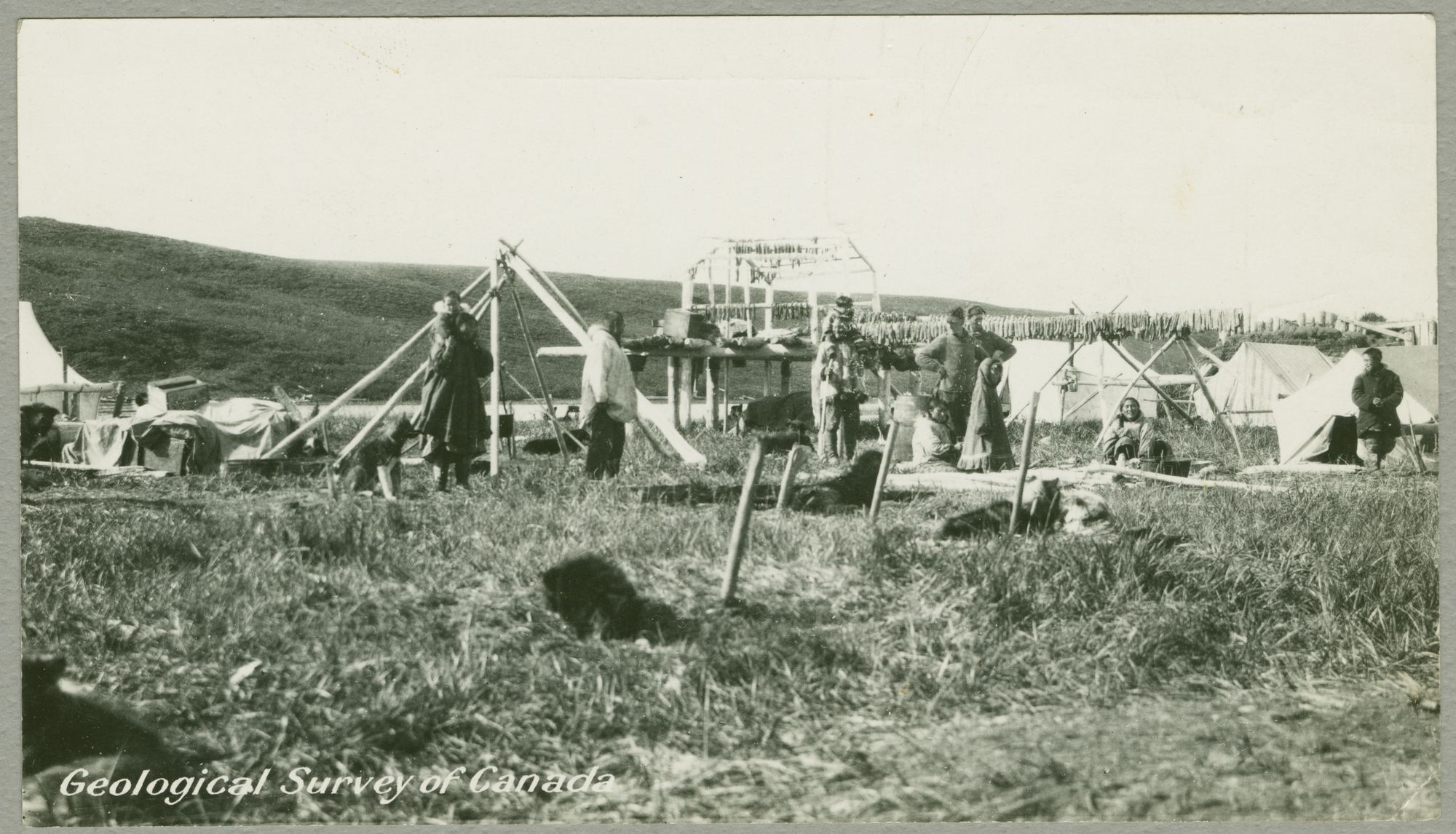Hunting and Gathering
By: Ava Neijna
For many decades, explorers have ventured to the Arctic and captured what they see. However, over time, the object behind the camera has changed.
If a person or anything man-made, such as a house, got in the photos by mistake, I would discard them. Today, it’s different.--Carsten Egevang
As Egevand has said, he overtime shifted his photography from climate change and animals to understanding the native culture and the people in it. The object behind the camera is not ice and landscape but rather gaining perspective to native culture. Here are examples of a western perespective on Arctic hunting and gathering from western artists other than Egevand.
Here, in the two images shown, artists have captured hunting and gathering in the Arctic. Notice that both of these images lack color and have unidentified individuals. The western perspective here is able to capture the native lifestyle, yet there is not specific information about either image. The men and women remain unidentified, and the specific tools and locations also remain unknown.
The image titled Equipment; Hunting; Individuals: male, Inuit depicts three Inuit men holding hunting tools. One of the tools being held appears to be a spear. However, we do not know who the individuals are, noticing specifically how it is hard to make out their faces. We can also notice that the men are wearing many layers of clothing, and specifically, fur can be seen on one of the men. So, we can make the assumption that the temperature is very cold, which makes sense since the caption of this image indicates that this is a Canadian Arctic Expedition. Additionally, we can see that there is grass on the ground, so the three men are hunting on grass covered ground rather than ice. The image does not detail the importance of hunting in indigenous culture nor describe the details of any of the tools used for hunting. This image also lacks animals. Lastly, the title of the image is just a description of exactly what we see and nothing more. Thus, it becomes the observers responsibility to identify what is occuring in the image. The western perespective does not provide descriptive details here.
The image titled A fishing camp--sun drying the fish is again a very objective title of the image. Different from the other image shown, there are eleven total men, women and children. Some of the older individuals have younger children on their shoulders. Further, all of the individuals appear to be in heaving clothing, which is indicative of the cold temperatures. Additionally, it is hard to make out the faces of the individuals, keeping the identity unknown. Some of the individuals are grouped together whereas others are sitting alone. In addition to native individuals, there are some dogs that are depicted in the image. Next, it appears that fish have been hunted and are now being dryed out, but we cannot tell what type of fish these are. There are a lot of fish, which appear to be food for the entire community. There are also tents which depict a civilization of some sort. There are some wooden looking stakes put together in triangular formations, which may be indicative of the beginning stages for making more tents. This image does not show the importance of the fish that has been hunted in my perespective since there is no detail of the animal. Thus, the western perspective takes away the importance of the relationship between the native hunters and the hunted animals.
Inuit culture of hunting and gathering is being captured through a western lens. However, there is not much specificity to what is taking place. Further, these images appear to make the civilizations look very primitive. The western artist is capturing what they see without truly understanding what they are seeing. So, the responsibility for interpretation of the images rests in the hannds of the viewer.


